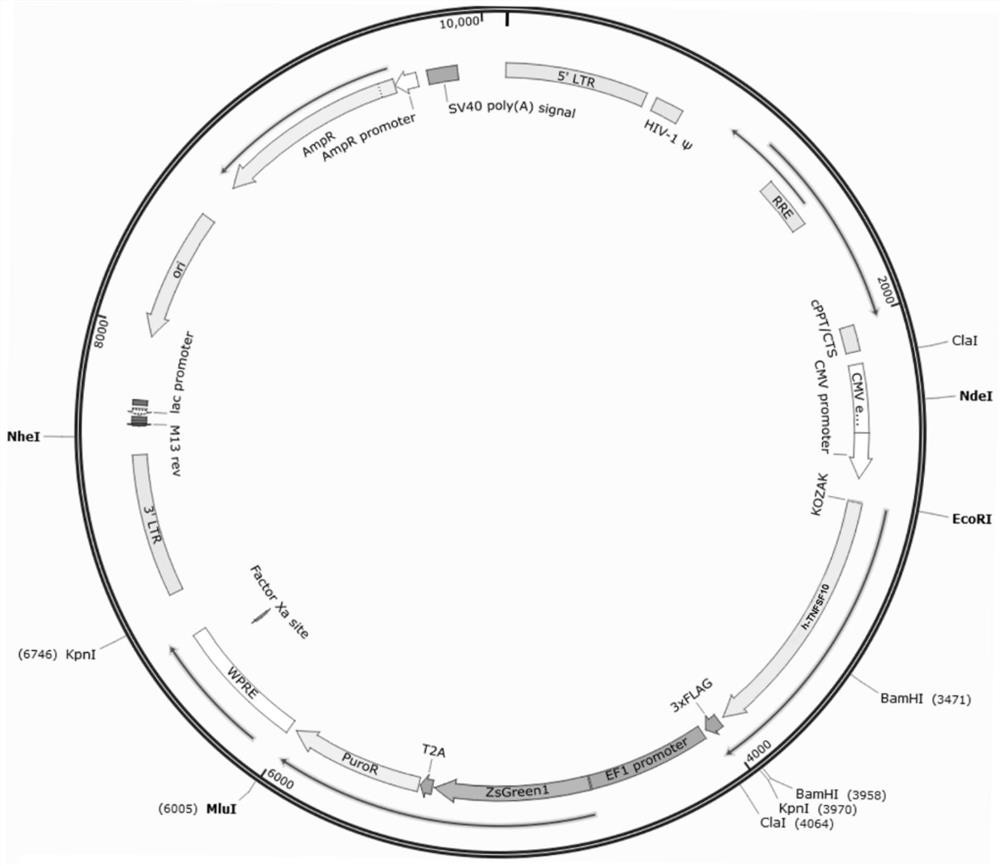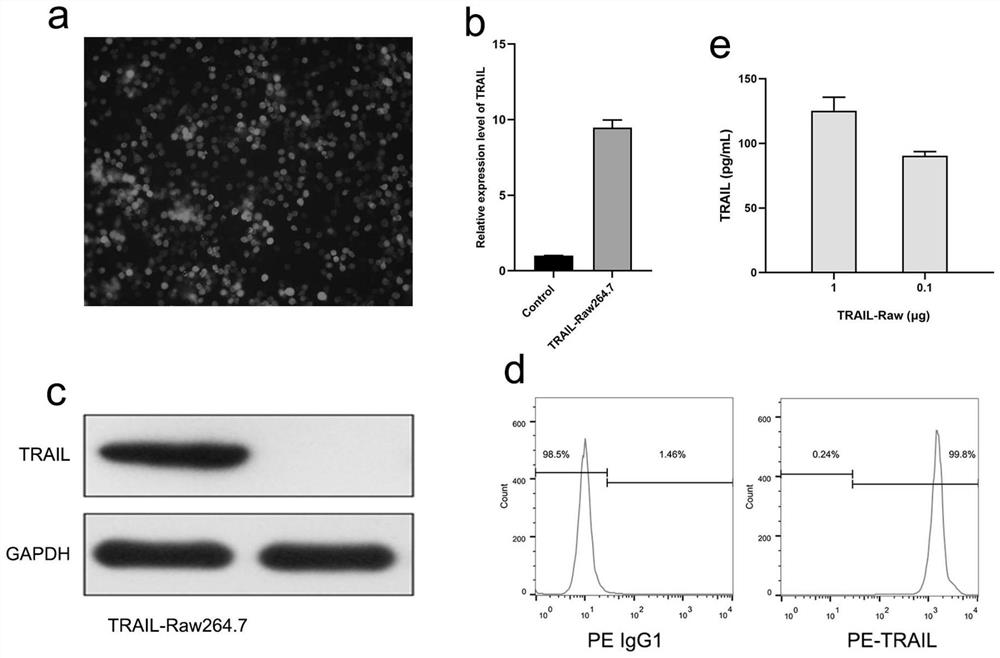Composite exosome loaded with membrane-bound tumor necrosis factor-related apoptosis-inducing ligand and small-molecule antitumor drug
A tumor necrosis factor and apoptosis-inducing ligand technology, which is applied in the fields of biomedicine and oncology, can solve the problems of enhanced targeting and low bioavailability, and achieves reduced side effects, good reproducibility, and improved therapeutic effect. Effect
- Summary
- Abstract
- Description
- Claims
- Application Information
AI Technical Summary
Problems solved by technology
Method used
Image
Examples
Embodiment 1
[0054] Example 1: Construction of overexpression TRAIL lentiviral vector
[0055] The TRAIL (Homo sapiens TNF superfamily member 10, TNFSF10) nucleotide sequence (NM_003810) was synthesized into the pHBLV-CMV-MCS-3FLAG-EF1-ZsGreen-T2A-PURO lentiviral expression vector. The specific process is as follows: select the vector enzyme digestion system → enzyme digestion of the carrier at 37°C, gel recovery → fragment PCR recovery → put the nucleotide sequence of TRAIL and the lentiviral expression vector connection reaction system in a 50°C warm bath for 20 minutes → transform (competent cells DH 5a; resistance: ampicillin, 37°C, 230rpm, 24h) → pick bacteria from the transformed plate, shake the bacteria at 37°C, 250rpm for 14h → perform PCR identification on the bacterial liquid, and perform overexpression sequencing on the positive clone liquid.
[0056] figure 1 It is the TRAIL lentiviral expression vector map constructed in Example 1.
Embodiment 2
[0057] Example 2: Lentiviral packaging
[0058] Use a plasmid DNA extraction kit to extract a large number of constructed lentiviral expression vectors and helper plasmids. The plasmid concentration must be greater than 1 μg / μL, and the A260 / 280 between 1.7 and 1.8 can be used for virus packaging. The 293T cells were digested, centrifuged, resuspended with complete culture medium, subcultured into petri dishes at a ratio of 1:10, and placed in an incubator to continue culturing. Transfection can be carried out when the density of 293T cells reaches 70-80%. Replace the culture medium with serum-free medium, and perform lipotransfer complex: 10 μg pSPAX2, 5 μg pMD2G, 10 μg shuttle plasmid containing the target gene, 75 μL Lipofiter TM reagent. Six hours after transfection, the cells were replaced with complete culture medium containing 10% FBS. Virus supernatants were collected twice at 48h and 72h after transfection. When the virus was harvested at 48 hours, the culture med...
Embodiment 3
[0059] Embodiment 3: detection of virus titer
[0060] After digesting and counting 293T cells, dilute to 1~3×10 5 / mL, add to 96-well plate, 100 μL / well, prepare 6 wells for each virus. On the next day, prepare six 1.5mL EP tubes, add 10 μL of virus solution to the first EP tube, and then make a 3-fold serial dilution, a total of 6 dilutions. On the third day, if there are wells that need to be screened with puromycin, first aspirate 100 μL of medium containing lentiviral particles, and then add 100 μL of complete medium containing puromycin. On the fifth day, observe under a fluorescent microscope. Six hours before the observation, fresh complete medium needs to be replaced. Aspirate 80 μL of medium from the well, then add 80 μL of fresh complete medium, and put it into the incubator for cultivation. After 6 hours, the results were observed under a fluorescence microscope, and the wells with a fluorescence percentage of 10-50% were selected to calculate the virus titer. A...
PUM
| Property | Measurement | Unit |
|---|---|---|
| particle size | aaaaa | aaaaa |
Abstract
Description
Claims
Application Information
 Login to View More
Login to View More - R&D
- Intellectual Property
- Life Sciences
- Materials
- Tech Scout
- Unparalleled Data Quality
- Higher Quality Content
- 60% Fewer Hallucinations
Browse by: Latest US Patents, China's latest patents, Technical Efficacy Thesaurus, Application Domain, Technology Topic, Popular Technical Reports.
© 2025 PatSnap. All rights reserved.Legal|Privacy policy|Modern Slavery Act Transparency Statement|Sitemap|About US| Contact US: help@patsnap.com



